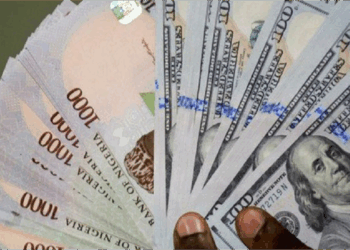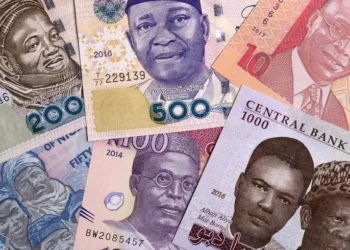Nigeria’s money supply contracted for the first time in 2025, dropping to N110.32 trillion in February from N110.94 trillion in January.
The 0.56% decline comes amid continued liquidity management by the Central Bank of Nigeria (CBN), following earlier signs of monetary tightening and exchange rate adjustments.
The figure, however, still reflects a significant 15.45% increase year-on-year compared to the N95.56 trillion recorded in February 2024.
This indicates that despite the recent slowdown, Nigeria’s monetary base has expanded considerably over the past 12 months.
M3, which includes both net foreign assets (NFA) and net domestic assets (NDA), provides a holistic picture of Nigeria’s monetary dynamics. The movement in February reflects changes in both foreign reserves and domestic credit flows.
Foreign and domestic assets movement
A closer look at the components of M3 shows that net foreign assets fell sharply by 8.62% in February to N32.34 trillion, down from N35.39 trillion in January.
This decline of over N3 trillion is likely a reflection of reduced external reserves or increased FX interventions by the CBN aimed at stabilising the naira.
On the other hand, net domestic assets rose to N77.97 trillion in February from N75.55 trillion in January, representing a 3.21% increase month-on-month. This suggests sustained credit expansion within the domestic economy, particularly from government and private sector lending.
However, compared to February 2024, net foreign assets rose significantly from just N7.41 trillion—a jump of over 337%. This highlights the impact of exchange rate liberalisation and increased foreign inflows over the past year.
Meanwhile, net domestic assets declined slightly from N88.15 trillion recorded in the same period last year, pointing to a possible shift in asset composition driven by evolving monetary policy.
Broad Money (M2) slightly lower
Broad money supply, excluding certain large time deposits and institutional instruments, known as M2, also recorded a marginal decline in February. The figure dropped to N110.31 trillion from N110.93 trillion in January, mirroring the same 0.56% contraction seen in M3.
Despite the short-term drop, M2 is still up 17.39% compared to February 2024, when it stood at N93.97 trillion. This highlights a broader monetary expansion over the past year, consistent with government spending and accommodative fiscal conditions witnessed in the second half of 2024.
Narrow Money (M1) expands
- Narrow money (M1), which includes currency in circulation and demand deposits, recorded a 2.18% increase in February, rising to N37.57 trillion from N36.77 trillion in January.
- This points to increased liquidity in the hands of households and businesses, possibly linked to higher transactional demand and ongoing fiscal disbursements.
- Compared to the same period in 2024, when M1 was N30.28 trillion, narrow money grew by 24.07%.
- The significant year-on-year growth suggests higher reliance on cash-based transactions and short-term banking instruments amid inflationary pressures and currency volatility.
What this means
The February data reflects a shift in Nigeria’s liquidity structure, as the fall in net foreign assets dragged down the overall money supply, despite a rise in domestic credit and demand deposits.
- The sharp rise in foreign assets over the past year is now beginning to taper, potentially reflecting stabilisation in forex inflows or the impact of CBN’s interventions in the official FX market.
- With inflation still elevated and the naira seeing some stability following recent reforms, the moderation in M3 could offer a temporary breather for monetary authorities.
- It may also influence the tone of the upcoming Monetary Policy Committee (MPC) meeting as the CBN continues to balance its inflation-targeting mandate with the need to support growth.























